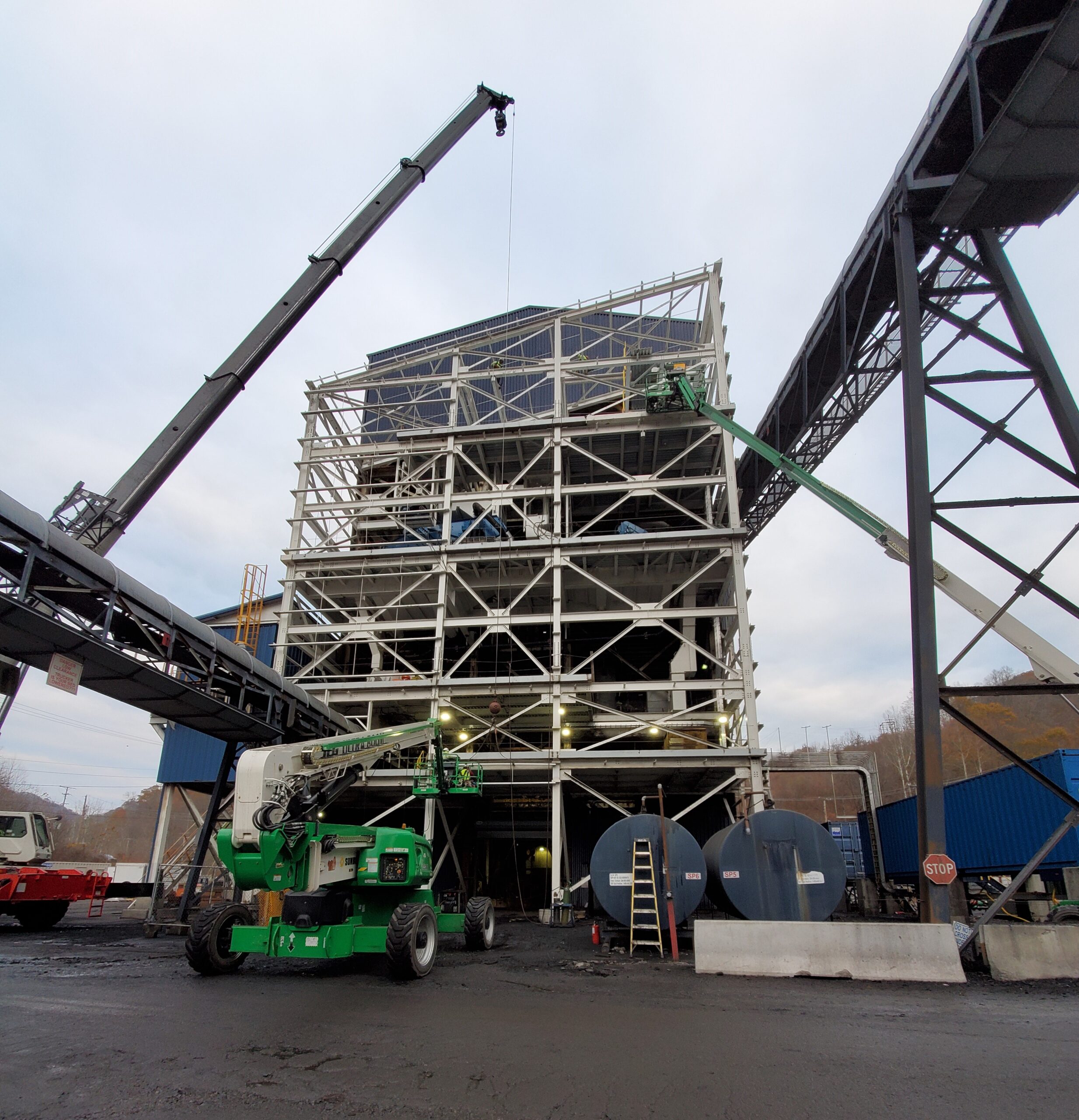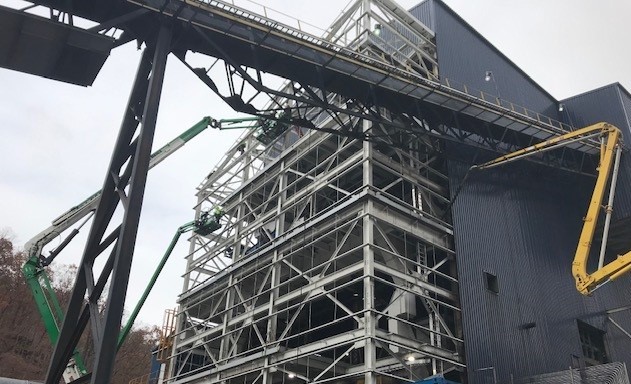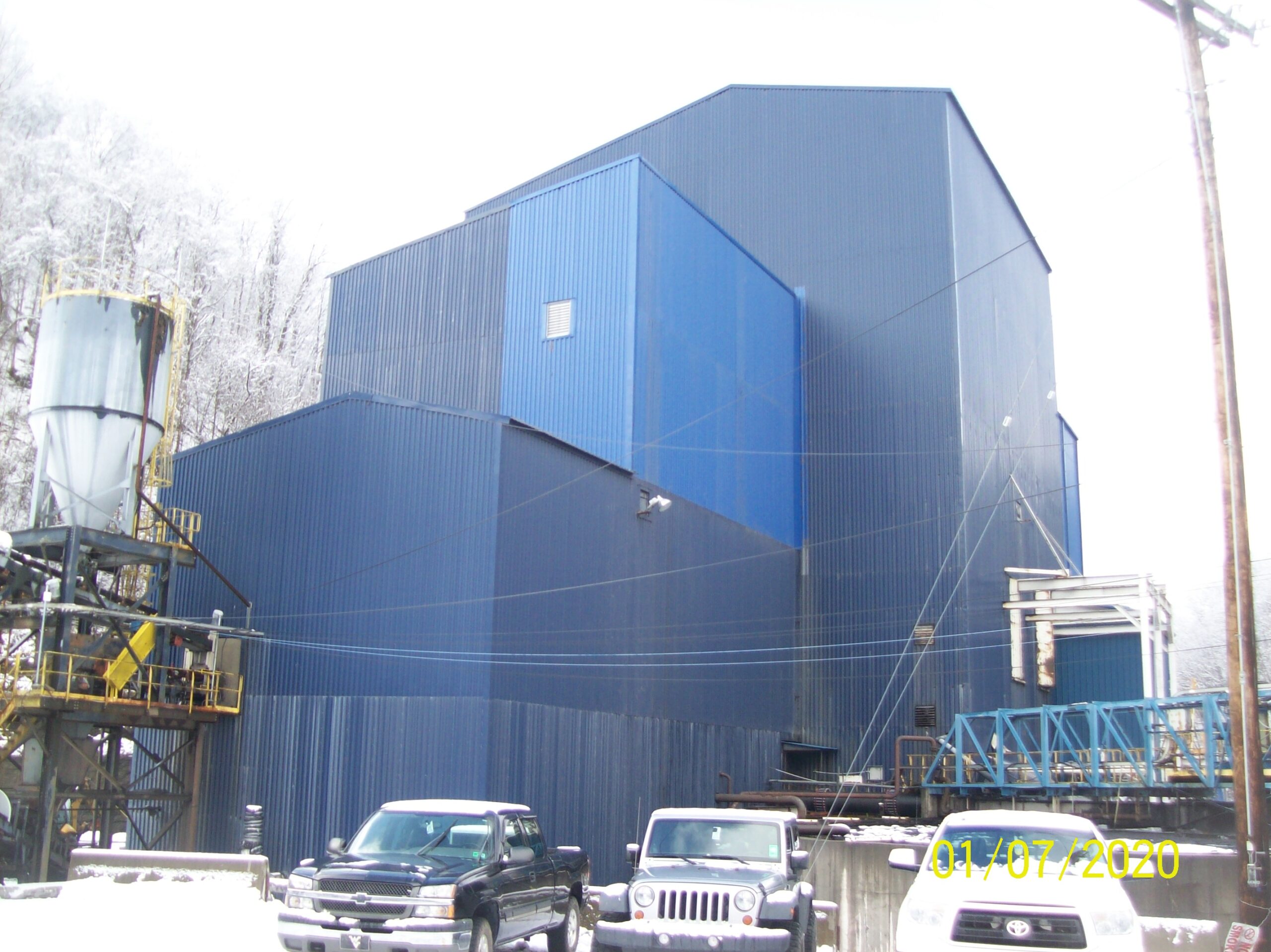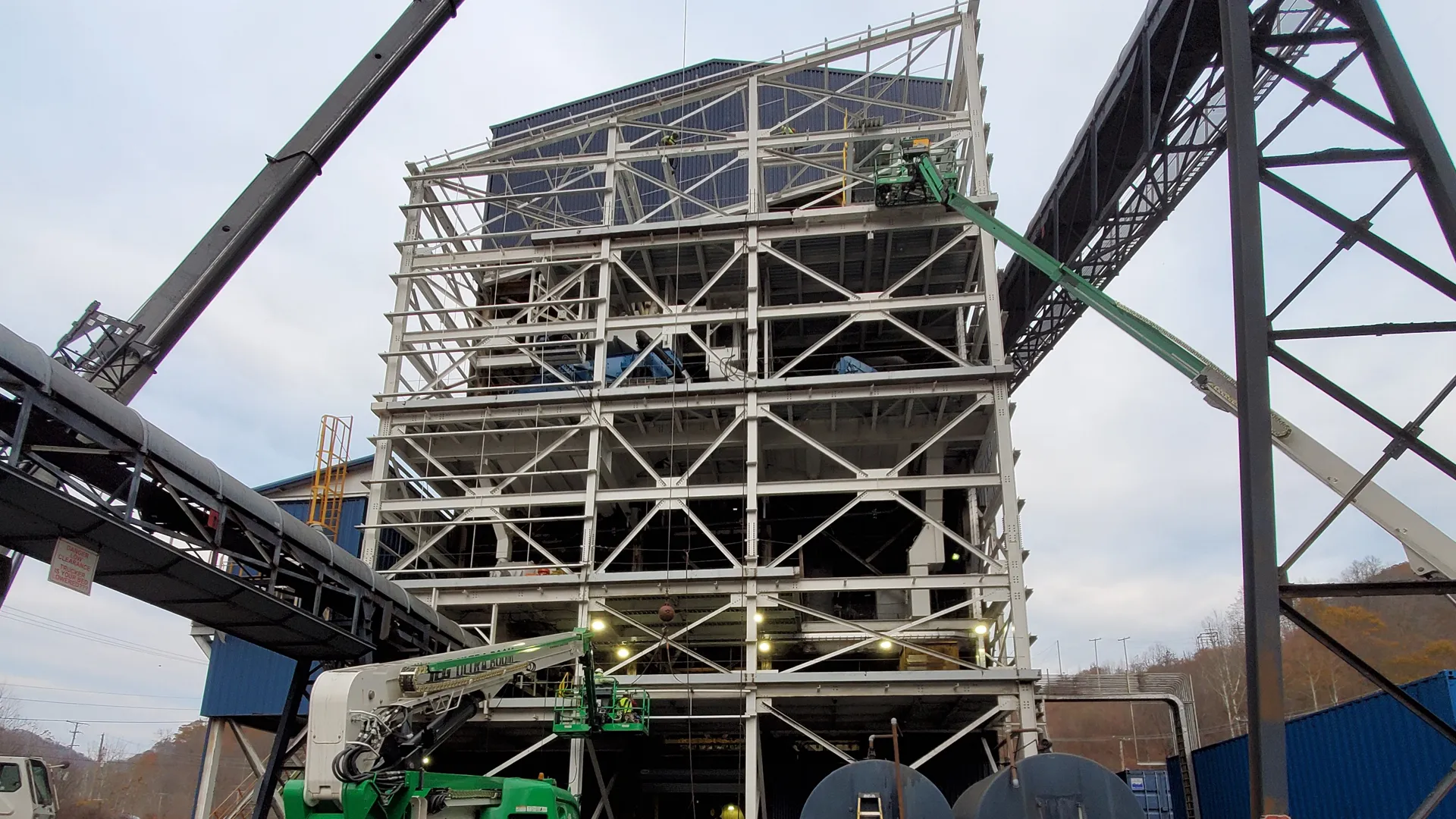To remain competitive in today’s global marketplace, the coal industry must invest its capital effectively to constantly improve operational efficiencies. In 2019 Industrial Resources designed and built an addition for a West Virginia coal preparation plant to increase its raw feed capacity from less than 900 tons per hour (tph) to more than 1,200 tph, a 35% to 40% increase.
Industrial Resources is a design-build contractor that has successfully designed and constructed many processing plants and material handling systems for various industries for more than 75 years. The storyline for this upgrade is how the design-build contracting approach assured a successful project that achieved both objectives: the effective use of capital and improved efficiency.

Growing the Raw Feed Capacity
It was clear that the existing preparation plant’s heavy-media cyclone circuit was heavily loaded, being pushed to its limits, and could not support a new mine expansion that was being planned. To accommodate the additional tonnage, the plant would have to be expanded and an additional heavy-media cyclone circuit would have to be added. To accomplish this goal, a firm that could provide the initial process design, detail engineering and the construction, along with budgeting and scheduling advice was engaged. Since performance is always the most important goal, the expansion had to meet tonnage and quality requirements and perform cost-effectively. Capital costs and schedule were unquestionably very important considerations. One company taking the responsibility for guaranteeing performance, costs, and schedule eliminated the question of accountability.
Approximately 45% of the total new feed requirement was directed to the new heavy-media circuit, which took some of the load off the existing plant and helped improve the performance of the existing circuit.
The new heavy media circuit included the following equipment:
- McLanahan 36” wide x 25’ long drag chain conveyor that can handle 3” to 18” over size materials from the raw coal screen at a maximum capacity of 150 TPH
- Conn-Weld 8’x20’ deslime banana screen that provides the initial size separation for the coarse coal (5/8” x 1.0 mm size range) and fine coal (minus 1.0 mm size range) circuits
- Krebs 33” diameter primary heavy media cyclone that upgrades coarse particles in the 5/8” to 1.0 mm size range
- Conn-Weld 10’x20’ clean coal banana drain & rinse screen that receives the coarse clean coal (5/8” x 1.0 mm size range) from the Krebs 33” diameter primary heavy media cyclone
- Conn-Weld 8’x16’ refuse drain & rinse screen that receives the coarse refuse (5/8” x 1.0 mm size range) from the Krebs 33” diameter primary heavy media cyclone
- Ludowici VM1400 Centrifuge to dry the coarse clean coal (5/8” x 1.0 mm size range) from the Conn-Weld 10’x20’ clean coal banana drain & rinse screen
- New fabricated Heavy Media Sump and Pumps
- New fabricated Refuse Sump and Pump
Changes were also made to the existing plant circuit to increase its capacity and efficiency which included:
- Replacing the bottom deck of the existing Raw Coal Deslime Screen with 5/8” openings made from Polydeck material
- Modifying the existing Raw Coal Deslime Screen underflow pan to allow material to feed the new Conn-Weld 8’x20’ deslime banana screen
- Two Krebs 15” diameter Raw Coal Classifying Cyclones were added to the existing bank of six to make a new bank of eight
- One Krebs 15” diameter Fine Refuse Cyclone was added over the existing Hi-Frequency Refuse Screen that took the over size to a refuse bleed box and the under size to the feed box of the existing Hi-Frequency Refuse Screen
- Bank of Krebs Spirals was added in the existing prep plant to allow for the increased capacity
- Three new Spiral Protection Sieves were added in the existing prep plant to prevent plugging of the spirals due to severe wear on the deslime screens
- Refurbished Bank of (4) Wemco 120 Froth Flotation Cells was added in the existing prep plant to allow for the increased capacity
Other improvements included upgrades to the magnetite recovery circuit, process piping and a number of the existing conveyors to accommodate the additional tonnage. Additionally, the project included the required electrical installation and some demolition.
Meeting Expectations
Industrial Resources was retained in April 2019 to develop the necessary conceptual engineering and process flowsheet for the addition. In May 2019, the project received authorization to proceed and by early December the plant expansion was completed and commissioned. In a little more than 8 months, the project was taken from initial concept to completion.
The project exceeded all performance expectations, was completed within the amount budgeted, and on the agreed upon schedule. The multifaceted success of this project, according to Industrial Resources, can be attributed to the contracting method employed. The overall project management process consisted of five stages: initiation, planning, execution, monitoring and control, and the closing.
During the initiation stage, the activities performed included defining the project goal; defining the project scope; identifying the key stakeholders; identifying potential risks; and producing an estimated budget and timeline. A blueprint was created during the planning stage to guide the entire project from concept through completion. It mapped the project’s scope as well as the resources required to create the deliverables. It also estimated time and financial commitments and developed a communication strategy to ensure stakeholders are kept up to date and involved and an execution plan.
During the execution stage, Industrial Resources removed bottlenecks for disciplines, such as engineering, procurement, and construction. The company also delegated and provided oversight of the work on the project while maintaining good relationships with all team members. This keeps the entire project on time and on budget. Monitoring and control activities measured the progress of the project to ensure it developed properly. Weekly status reports updated team members and management. Also, decisions were made to determine what corrective action or change was needed to keep the project on track.

The closing process occurs once the project deliverables have been produced and the stakeholders validate and approve them. During this stage, contracts with suppliers, external vendors, and consultants are closed. A “lessons learned” meeting was held and the final operations and maintenance manuals were delivered to the coal company.
The procurement management process used in this project was strategic in nature in optimizing organizational spend by acquiring goods and services from preferred vendors within the stipulated budget, on or before the required deadline. Detailed bills of materials were generated by the engineering group and are sent to the procurement group to ensure product specifications were properly communicated.
Then, the procurement group obtains bids from preferred vendors and evaluates the bids to determine which vendor best meets the needs for the project. Once contracts are signed, regular status updates are required to ensure the vendors are proceeding as planned and are meeting the requirements outlined in their contracts. Finally, once the items are received and inspected on-site, the procurement process can be finalized.

The daily open communication between Industrial Resources construction group and the client was also key in the success of this project. Because the existing preparation plant needed to continue operating while the new heavy media circuit was being constructed, it was critical to coordinate the plants’ operational requirements with the needs of the construction group.
Using a design-build contracting strategy, that employed a firm with the prior experience on similar projects, and with the experienced key management, engineering staff and construction personnel to take the project from initial concept to final commissioning, was an important component in this accomplishment. These benefits extended from the start of the project, substantially reducing the project schedule, all the way through construction, being able to respond faster and more economically to changes. Above all, the most important criteria in judging the success of this project is its ability to meet and exceed the process performance goals of the customer. Design-build contracts clearly assign the responsibility for guaranteed process performance to one company, relieving the owner of these responsibilities.

